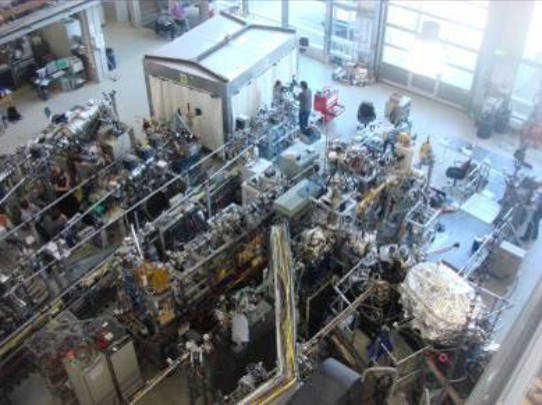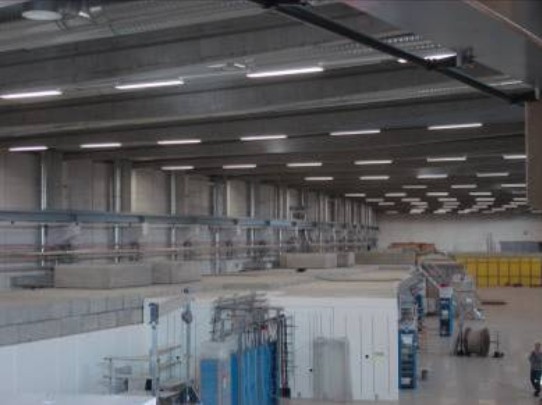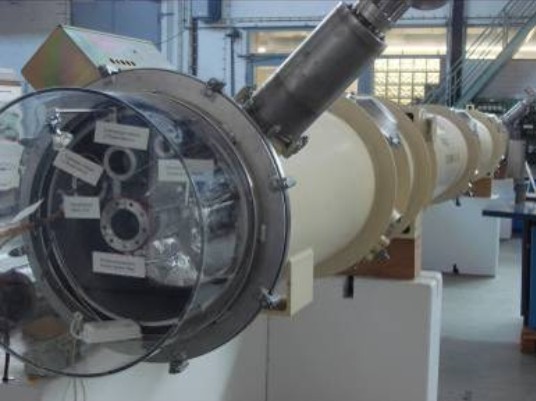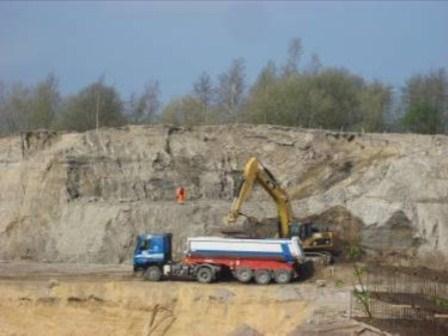
| 2009-04-10 04:49:05 |
|
A.Chilingarian’s report on participation in Management Committee Meeting COST Action ES0803 “Developing Space Weather Products and Services in Europe” Italy, 1 -3 April 2009
Meetingof the INTAS collaboration N 06-1000017-8777, “Solar and Galactic Cosmic Ray Particle Acceleration and Modulation”;
Meetings in Frascati and DESYaccelerator centers, April 5-9.
COST (EuropeanCo-operation in the field of Scientific & Technical Research) was founded in 1971. COST is an intergovernmental frameworkallowing the co-ordination of nationally funded research on a European level:
• Today ithas almost 300 Actions and involves nearly 30,000 scientists from 34 Europeanmember countries and more than 80 participating institutions from 11 non-membercountries;
• COST is basedon Actions. These are networks of co-ordinated national research projects infields, which are of interest to a minimum number of participants (at least 5)from different member states. The Actions are defined by a Memorandum ofUnderstanding (MoU) signed by the Governments of the COST states wishing toparticipate in the Action. Theduration of an Action is generally 4 years;
• Annual ~€ 120000 per Action is basically used to cover co-ordination costs such ascontributions to workshops/conferences, travel costs for meetings, contributionsto publications and short term scientific missions of researchers to visitother laboratories, Conference grants for early stage researchers (PhD +<10years), students summer schools.
The COST Action ES0803 “Developing space weather products and servicesin Europe” has the primarygoal to form an interdisciplinary network between European scientists dealingwith different issues of Geospace, as well as warning system developers andoperators, to: Foster the ties between European Geospace research and spacetechnology establishments, Assess the European potential in advanced SpaceWeather observational and modeling techniques and in reliable products andservices Define the needs of a broad range of users and Determine and recommendthe specifications for new products and services that best meet the usersrequirements.
At the management committee meeting April 3,2009 Armeniawas accepted as associated member of the COST action. Decision of themanagement committee should be approved by the COST office in Brussels.
The meeting of the INTAS collaboration N06-1000017-8777, “Solar and galactic cosmic ray particle acceleration and modulation” was held in Italy due toparticipation of the all principal investigators in the COST action.
Figure 1 INTAS consortium, from left to right: Prof. Dr. Rainer Hippler, Institut fur Physik, UniversitatGreifswald; Prof. Lev I. Dorman, Tel Aviv University,Technion, and Israel Space Agency; Prof.Erwin O. Flueckiger, Physikalisches Institut, University of Bern; Prof.Ashot Chilingarian, Yerevan Physics Institute.
Visit to Frascati accelerator facilities
The Italian National Institute for Nuclear Physics (INFN) is realizingin the Frascati National Laboratory several programs using particleaccelerators. In domain of high energy physics it is first of all extremelyprecise study of the different decays of Phi and K mesons at DAFNE experiment,which will deliver new data on the CP violation and K meson physics with uniquecharacteristics of energy resolution. A second experiment, FINUDA, will beinstalled on one of the two interaction straights of the DAFNE main rings toperform studies on the spectroscopy and decay modes of hypernuclei, e.g.special nuclei, where a nucleon is replaced by a baryon made up of"strange" quarks (Lambda, Sigma, Csi).
Besides high energy physics, a large assortment of particle acceleratorsis designed and fabricated for producing a variety of beams for the applied science and industry.
Excimer laserslaboratory produce excimer laser-facility named Hercules and a laser-drivenpoint-like plasma source tuneable in the extreme UV and soft X-ray spectralregion. Excimer Laser facility (10 J/pulse, 10 Hz), is a pulsed X-ray sourceemitting in the range between 70 eV and 1200 eV, a Linear Accelerator (5 MeV,160 mA, 20 Hz) and a mm-wave FEL (2-3 mm, 1.5 kW - 4 ms pulse, 10 Hz).
The Free Electron Laser (FEL) Laboratory is operating in the mm-waveregion (2.1 - 3.6 mm, infrared spectral region) and is being extended in the FarInfrared Region (FIR) down to (400 mm). A new device is presently underconstruction, based upon the new concept of "phase matching" betweenenergy and phase of the e-beam that will generate high power coherent FIR radiationwithout the use of a resonator.
In the Frascati accelerator facilities have been performed studies of:
- solid state physics;
- superconductivity and spectroscopic experiments in the FIR and mm-wave region;
- investigations of the spectral range between approximately 30 GHz and 10 THz for telecommunication purposes;
- to develop techniques imaging techniques for medical diagnosis and therapy;
- research on THz and far infrared radiation influence on biological structures: cells, cell membranes, DNA, and proteins.
On the same way, although on much greater scale are new DESYaccelerators. DESY is concentrated now on the production of very powerful beamsfor different scientific and industrial applications. After closing in 2007HERA accelerator the high energy physics activity is shifted mostly on the dataanalysis and participation in LHC experiments. Only one high energy physicsexperiment with small budget is under consideration now. The MassachusettsInstitute of Technology (MIT) propose to use DORIS storage rings to checkpositron-electron asymmetry in studding scattering on fixed target with OLYMPUSdetector. Collaboration spokesman prof.R.Milner and chair of DESY directors board prof H.Dosch invited YerPhI to takepart in this experiment planned in 2012.
Figure 2 ARGUS spectrometer at the DORISstorage rings; to be changed by OLYMPYS detector from MIT.

Figure 3 Five ongoing experiments on the FLASH FEL facility. Intensiveenergetic X-rays are used for different experiments in structure research,nanotechnologies, biotechnologies, etc...

Figure 4 The new built experimental hall on PETRA 3 storage ring forproviding 14 beams of brilliant X-ray beams for application ranging from condensematter studies till medicine. On 21 January the first of the 14undulator magnets that will generate the brilliant X-ray light for PETRA III was installedin the 300-metre-long experimental hall.

Figure 5 The superconducting acceleration section for XFEL facility designedand testing now by the TESLA collaboration

Figure 6 Starting of excavations of the XFEL channel: the entrance at DESYthe end of channel will be 3 km further in Schleswig-Holstein. Channel will go35 meters under surface; construction planned to be finished in 2012 andacceleration sections also should be ready for this time.

Figure 7 Ggroup of YerPhItechnicians and DESY staff in the underground hall of HERA-B experiment on HERAaccelerator. For one month YerPhI employees helped DESY in dismounting the experimentalready finished. Their work was highly valuated by DESY administration. Someelectronics parts from abandoned experiment were collected and stored for latertransporation to Yerevan.Electronics will be used for preparing classes for Yerevan State Universitystudents in new forming Space Education Center of YerPhI.
